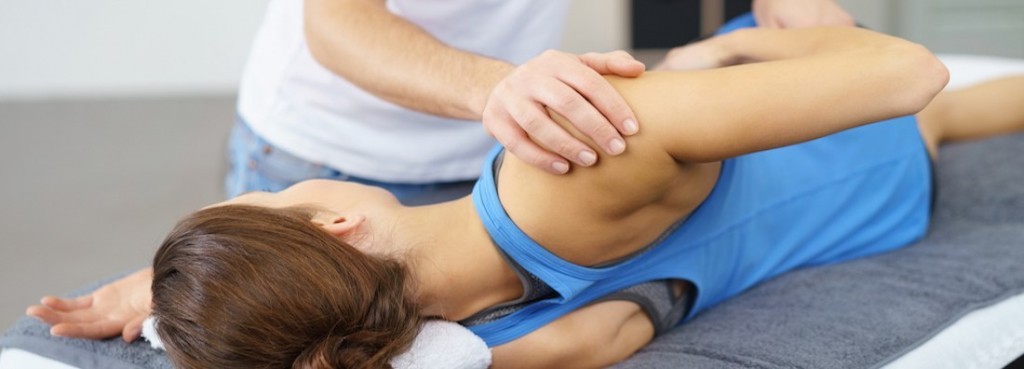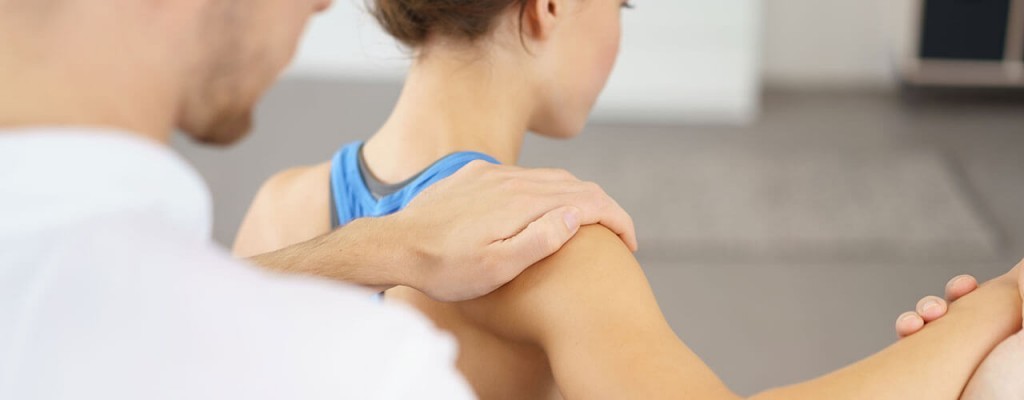
Shoulder disorders
The shoulder pain and disorders
The shoulder is one of the most complex mobile joints in the body and as a result there can be many different causes of shoulder pain, It has many tendons and muscles that allow this movement to occur. An injury to the rotator cuff can commonly occur cause pain in the night or pain when trying to move the arm specially lifting above the head. Shoulder pain itself can be one of the most debilitating forms of pain and can cause significant limitations in one’s daily life.
Shoulder pain may result from a variety of causes including a falling injury, straining to reach an object, lifting something heavy or throwing a ball. However, the majority of shoulder pain or problems are a result of gradual irritation over time. This may be due to repetitive use of the arm, poor posture causing stress on the shoulder, or muscle imbalances such as tight anterior muscles and weak posterior muscles. If left untreated, minor irritations in the shoulder often lead to greater problems over time.
CONDITIONS WE TREAT
- Shoulder impingement (subacromial or internal)
- Rotator Cuff Injury Tear
- Tendinosis/Tendonitis
- Shoulder Bursitis
- Frozen Shoulder (Adhesive Capsulitis)
- Inflammation of the shoulder
- Tendon tear
- Unstable shoulder
- Arthritis
- Fracture of bones in the joint
Physical therapy can be very effective for rotator cuff injuries but sometimes surgery and PT is in needed. At iMOVE, we are committed to help you recover from your shoulder injury and increase your range of motion and reduce pain.
How Can a Physical Therapist Help?
It is important to get proper treatment for shoulder disorders as soon as it occurs. Secondary conditions can result from the impingement of the tissues in the shoulder, including irritation of the bursa and rotator-cuff tendinitis or tears.
Physical therapy can be very successful in treating shoulder disorders. You will work with your physical therapist to devise a treatment plan that is specific to your condition and goals. Your individual treatment program may include:
Pain Management. We will help you identify and avoid painful movements, as well as correct abnormal postures to reduce the pain. Therapeutic modalities, like iontophoresis (medication delivered through an electrically charged patch) and ultrasound may be applied. Ice may also be helpful to reduce pain.
Manual Therapy. We may use manual techniques, such as gentle joint movements, soft-tissue massage, and shoulder stretches to get your shoulder moving properly, so that the tendons and bursa avoid impingement and enhance the joint mobility and soft tissues flexibility.
Range-of-Motion Exercises. You will learn exercises and stretches to help your shoulder and shoulder blade move properly, so you can return to reaching and lifting without pain.
Strengthening Exercises. We will determine which strengthening exercises are right for you, depending on your specific condition. Strengthening the rotator-cuff and scapular muscles helps to maintain the normal shoulder’s mechanics . You may also perform resistance training exercises to strengthen your weaker muscles. You will receive a home-exercise program to continue your strengthening long after you have completed your formal physical therapy.
Patient Education. Learning proper posture is an important part of rehabilitation, We will work with you to help improve your posture, and may suggest adjustments to your work station and work habits.
Functional Training. As your symptoms improve, We will teach you how to correctly perform a range of functions using proper shoulder mechanics, such as lifting an object onto a shelf or throwing a ball. This training will help you return to pain-free function on the job, at home, and when playing sports.
Can this Injury or Condition be Prevented?
Shoulder pain and disorders can be prevented by
- Maintaining proper strength in the shoulder and shoulder-blade muscles.
- Regularly stretching the shoulders, neck, and middle-back region.
- Maintaining proper posture and shoulder alignment when performing reaching and throwing motions.
- Avoiding forward-head and rounded-shoulder postures (being hunched over) when spending long periods of time sitting at a desk or computer.
